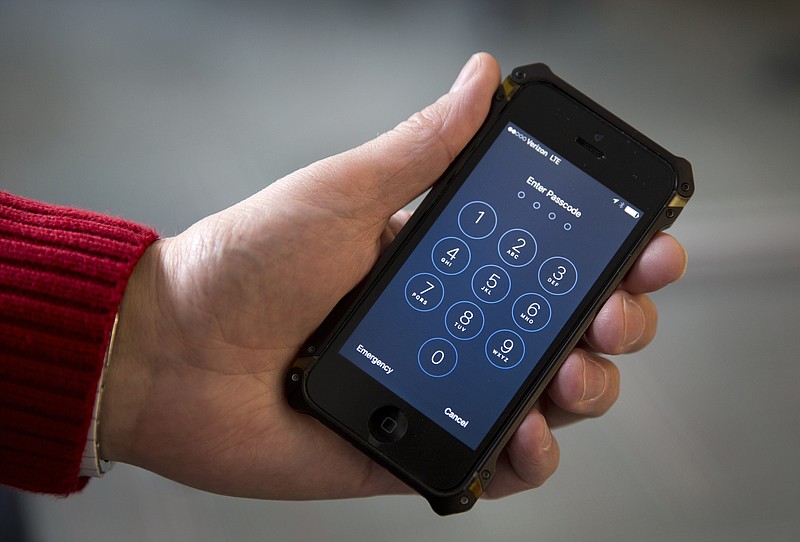I doubt a consumer alive hasn't experienced a pet peeve; furthermore, I expect your No. 1 gripe is more than likely the same as mine: robocalls. And you and I shouldn't feel alone, either, as robocalls were at the top of the 2018 complaint list and promises to equal the same this year.
Thanks to Consumer Reports and USA Today which added their ire to mine. let's all pledge to utilize their recommendations to fight these callers - scammers and others alike. (As USA Today reports, some spoofers are legitimate. For example, a battered women's shelter is allowed by law to spoof a number in order to prevent the abuser from knowing where the woman is staying. Other calls might be to notify us of a doctor's appointment, for example.)
If you answer the phone and hear a recorded message instead of a live person, it's a robocall. Internet-powered phone systems have made it cheap and easy for scammers to make illegal calls from anywhere in the world, and to hide from law enforcement by displaying fake caller ID information. In fact, 50 percent of all phone calls to the tune of 26.3 BILLION last year of illegal robocall and other Do Not Call violators fall into the robo category. Consumer Reports shows this staggering breakdown from 2018: 1,517 per second; 5,461,100 per hour; 131,066,390 per day; 3,986,602,683 per month; and a whopping 47,839,232,200 per year!
Nowadays, robocalls make up 50 percent of all phone calls. And, while the problem looks only to get worse and worse, we mercifully hold a whole arsenal of smartphone tools at our disposal, including blocking numbers, turning on Do Not Disturb mode, using our carrier's tools, or using third–party apps to eradicate these pull-out-your-hair harassers. In fact, a very recent (finally!) bipartisan Congressional bill called the Telephone Robocall Abuse Criminal Enforcement and Deterrent (TRACED) Act makes fines bigger and easier to obtain for those stinkers who deliberately violate robocalling laws.
The following advice can certainly minimize and perhaps even exterminate all those unwanted calls.
1. Reject anonymous calls automatically. If we're lucky, our robocalls appear as anonymous" on caller ID. (Most legitimate caller show up by name or identifiable phone numbers.) For instance, businesses and human beings come up as identifiable phone numbers. Depending on your service, you may have access to Anonymous Call Rejection on the landline. Make sure your caller ID is activated. Enter *77, and you will hear three beeps. Hang up, and any call that hides its number will be rejected.
This service varies by carrier, and some carriers charge extra. But even if a minimum charge occurs, it's well worth that dinner-table-peace-of-mind, especially if the snake slips through the Do Not Call Registry.
Note: In some jurisdictions, dialing *77 on your mobile phone may connect you with law enforcement. First, check with local or state law enforcement before trying *77.
2. Join the National Do Not Call Registry List. Technically, it's illegal for telemarketers to call you if you are on this. They cackle when calling since scammers don't give two flips about this list. Therefore, It's still smart to register your number as an added layer of protection. Just go to the website donotcall.gov and enter the landline or cellphone number you want on the list. (Landlines are free.) You can also call 1-888-382-1222 from any phone if you desire to be on the list, and your number stays on the list until you ask for it to be removed or you give up the number. Once you sign up, the Do Not Call list takes you off for-profit business call lists, but it isn't immediate. Telemarketers update phone numbers only periodically, so the FTC says it can take up to thirty-one days (assuming it actually happens). Don't relax just yet, though. Political organizations, charities and survey takers are still permitted to call as are businesses we've bought something from or made a payment to in the last eighteen months. Be sure to tell these subsequent callers to immediately take you off their list; they must honor this "request."
3. Use Carrier Tools to Block Unwanted Calls. The four major carriers have tools to identify, filter and prevent suspected nuisance numbers from calling or texting your phone. Most require an extra monthly fee to activate the caller ID service, but network-level blocking is free of charge across all the carriers.
* AT&T subscribers can use a free iOS and Android app called AT&T Call Protect. It has automatic fraud blocking and suspected spam warnings. Moreover, we can manually block unwanted calls.
* Verizon debuted in March a free call-blocking service, as well as a "Caller Filter" service for $2.99 per month per line. Also of great interest, Verizon has identified 300 million spam and scam phone numbers that, as of March, now blocks through free spam alerting and call-blocking tools.
* T-Mobile provides two free ways to combat robocallers and spam calls: 1) Scam ID, an automatic system that identifies spam numbers when your phone rings with no app to install or service to turn on and 2) Scam Block, which gives users an option to block those numbers. To turn this on, dial #662# on your T-Mobile handset and turn it off by dialing #632#. (T-Mobile has its own paid "Name ID" service, which identifies and provides caller information like the name, location and type of organization. Block these as needed. While included in T-Mobile ONE Plus plans, it costs $4 a month per line for other of its plans,
* Sprint offers "Premium Caller ID" service to protect their users from robocalls and caller ID spoofers. At $2.99 a month, it provides a threat level indicator to give customers an idea of how suspicious a call is by flagging calls with real-time data trends gathered across the U.S.
Unfortunately, the service doesn't automatically block known spam calls; however, on the threat level, users can choose to answer the call, block the number or report it to prevent future calls.
(To be continued)
Tax Tip: For those smart consumers with a long-term care policy, Uncle Sam allows a larger deduction for last year. Those of us 71 and older can claim up to $5,270, seniors ages 61-70 can claim up to $4,220, and folks 51-60 can deduct up to $1,580. Finally, don't forget tomorrow is the deadline so be certain your returns are mailed on time.
Contact Ellen Phillips at consumerwatch@timesfreepress.com.

